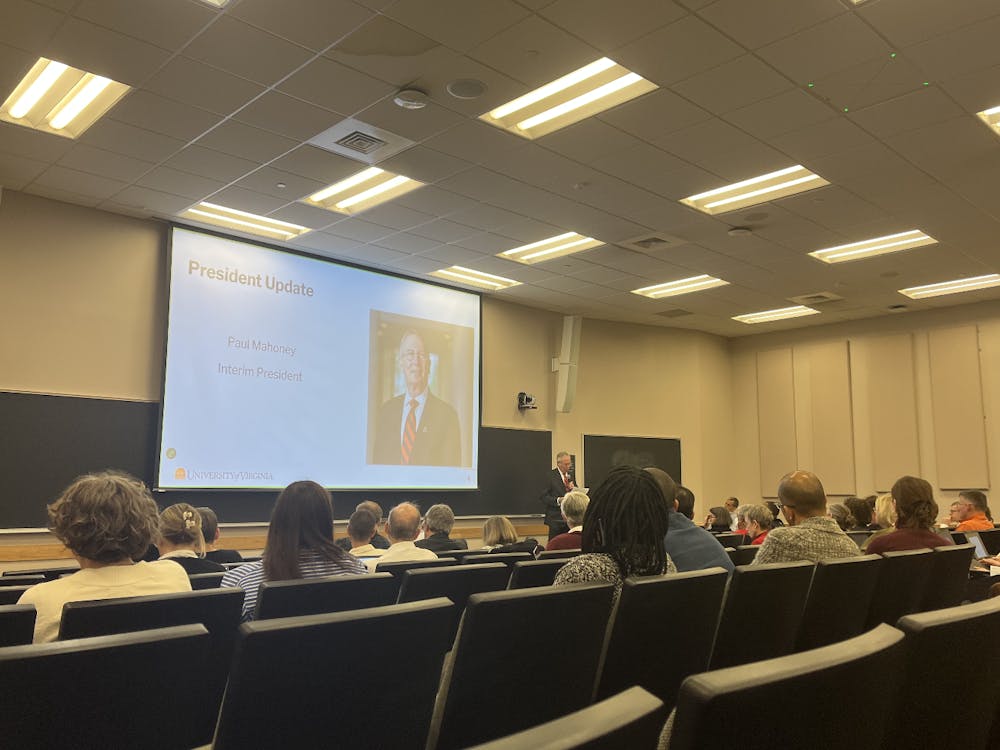The Blue Ribbon Commission presented its report to Charlottesville’s City Council Monday Dec. 19, recommending that statues of Robert E. Lee and Stonewall Jackson be recontextualized to reflect the broader historical context in which they were constructed and of the men they depict.
The commission had previously considered moving both of the monuments to McIntire Park, as opposed to merely recontextualizing them in their current locations. It presented both options — termed “Relocate” and “Transform-in-Place,” respectively — to the City Council, although the commission members voted against relocation as an option for Jackson’s statue.
Some of the potential benefits of relocating Lee’s statue include freeing up space in Lee Park for events downtown, according to the report, realigning the statue in the context of the Vietnam war memorial in McIntire Park and its historical association with that park’s namesake, Paul McIntire.
“McIntire donated the statues,” Blue Ribbon Commission member Frank Dukes said. “He also donated the land for McIntire Park. There’s nothing there right now that actually talks about that being a segregated park, so this would be able to add to that story that people understand that this used to happen, that there used to be segregated spaces, and why that was the case.”
However, this option is more expensive and time consuming than transforming the statue as it stands in Lee Park, and opponents argued that it deprived the city of a valuable opportunity to confront its history and the statue’s meaning in a geographically central and historically accurate setting.
“Numerous Charlottesville African American residents who have lived through decades of suppression of their history oppose removal on the grounds that it would be yet another example of hiding their experience,” the report read. “For them, transforming the statues in place forces remembrance of the dominance of slavery and Jim Crow white supremacy.”
There was also concern over misinterpretation of grouping both Jackson and Lee’s statues together in McIntire Park.
“Some members of the commission expressed concern that co-locating two major Confederate memorials within McIntire Park could alter the meaning of that landscape in ways that may be detrimental or inconsistent with its planned programming and design,” the report read.
The commission voted unanimously to rename both Jackson Park and Lee Park, but no new names have been recommended yet.
“They may end up being something like ‘Freedom Park’ or ‘Liberation Park’ or ‘Emancipation Park,’ or something of that sort,” Dukes said.
In the report, commission members emphasized the importance of making the recontextualization goes further than the addition of a few new plaques.
While it is unclear what form the new narratives around the statues will take, commission Vice Chair John Mason said they must include the many voices marginalized by the dominant history of Charlottesville, shaped predominantly by its white, wealthy residents.
“I think it’s time, it’s time to tell the history of Charlottesville,” Mason said in an interview with The Cavalier Daily. “That includes women, that includes poor working class white people, that includes African Americans, and sees them as absolutely integral to the way that the city and the region developed.”
This would involve placing the statues in the historical context in which Lee and Jackson existed, as well as when the statues were erected in the period between 1919 to 1924.
At the time of the Civil War, Charlottesville was a majority African-American city, Mason said.
“The reinterpretation of those statues begins with the fundamental understanding that most of the people who lived in Charlottesville and in Albemarle at the time of the Civil War were enslaved,” Mason said. “The defeat of the southern armies in the Civil War was not a tragedy, was not a time for mourning, but was a time for celebration, was a time for joy.”
Mason said the environment and spirit in which they were constructed make Lee and Jackson’s statues relics of the Jim Crow era, not Civil War statues.
“These [monuments] reflect an understanding of the Civil War, an interpretation of the Civil War that was prominent during the Jim Crow era of Charlottesville’s history and of the nation’s history, and it’s a particular mythologized and romanticized perspective on the Civil War that was told from the perspective of the post-war South,” Mason said. “They reflect an interpretation of the war that’s part of the Jim Crow era.”
The commission also made a number of other recommendations in its report, including creating a memorial to the Court Square Slave Auction Block, preserving of the Daughters of Zion Cemetery and funding for Vinegar Hill Park.
The City Council will review and respond to the Blue Ribbon Commission’s report at a work session in January.






